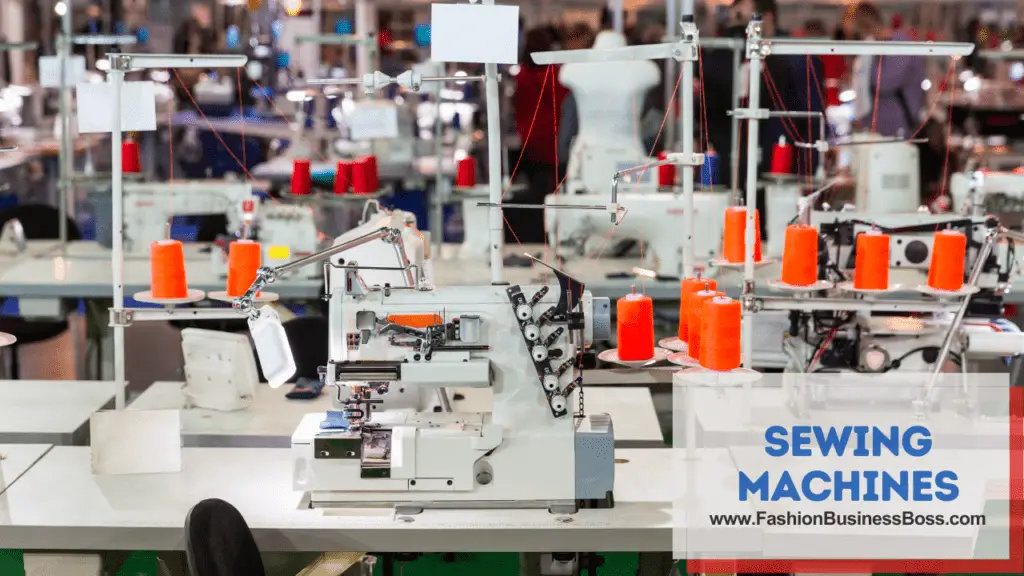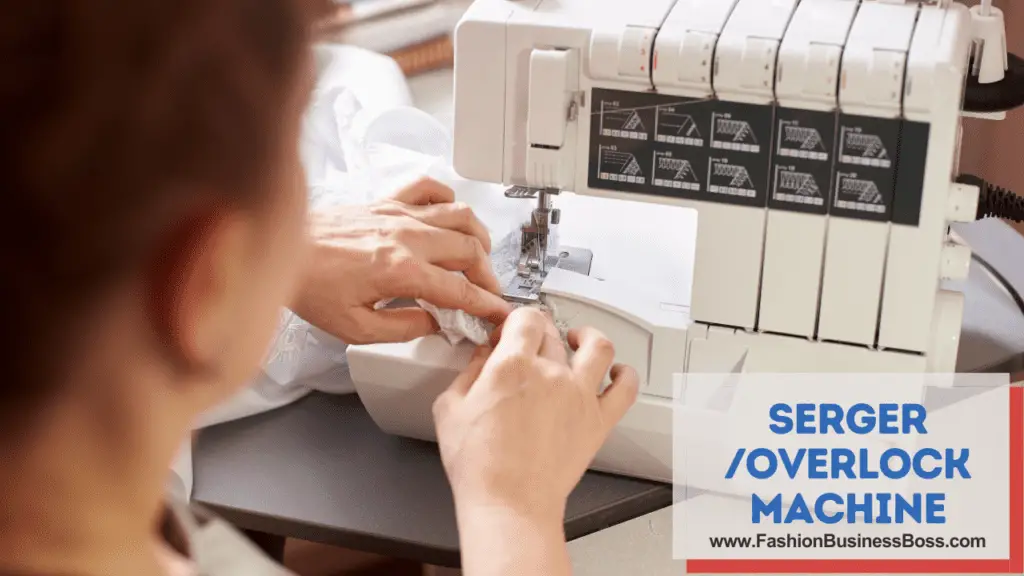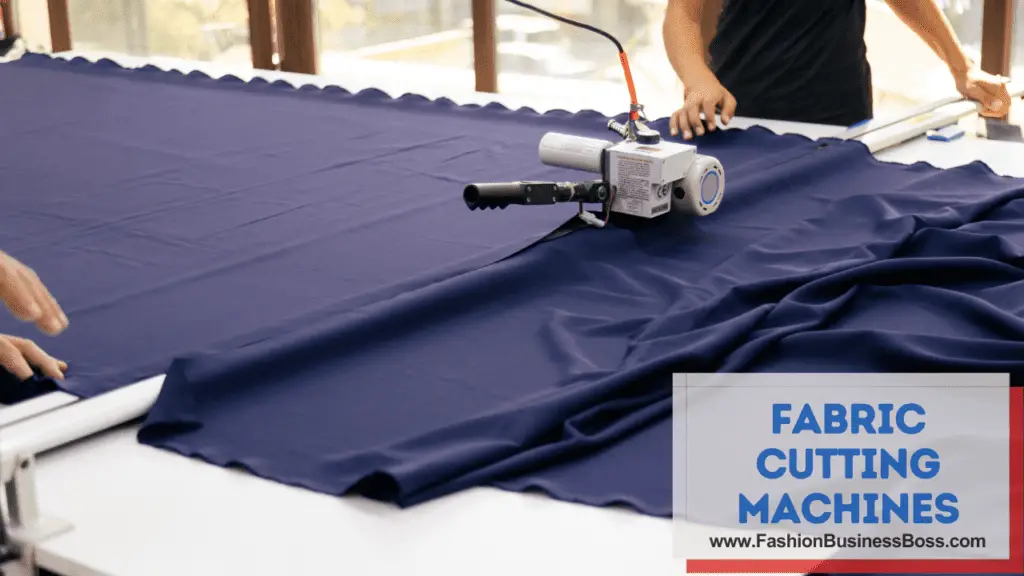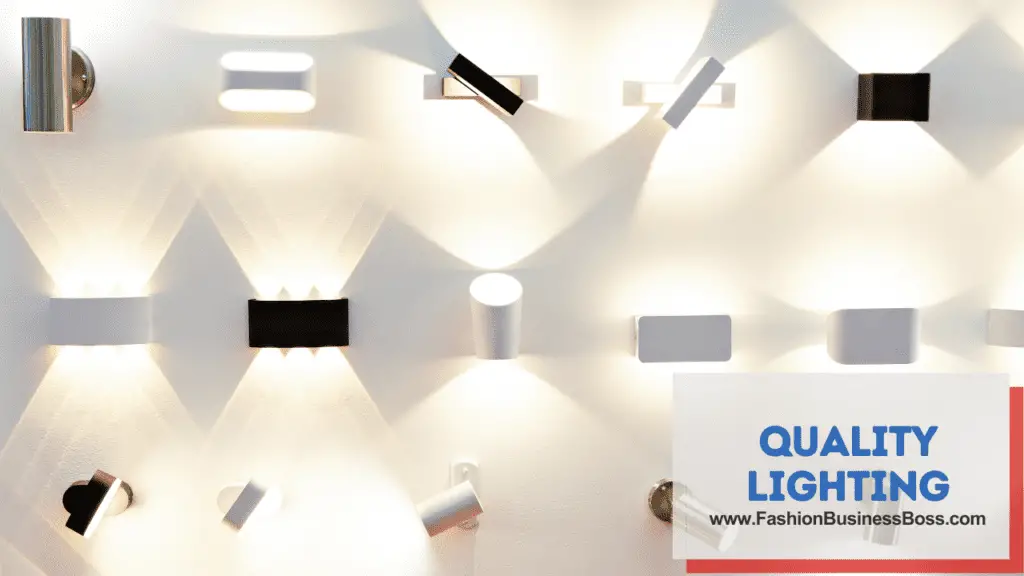Are you considering venturing into the world of fashion and launching your own clothing business? The apparel industry is not only creatively fulfilling but also financially fulfilling when done right. To set yourself up for growth, it’s crucial to invest in the right equipment.
To equip your clothing business, consider sewing machines (choose based on your needs), precision cutting tools, industrial irons, sergers, embroidery machines, pattern-making tools, efficient fabric cutting machines, label printing equipment, industrial sewing tables, and quality lighting.
In this article, we’ll explore the essential equipment needed to thrive in the clothing business.
Sewing Machines

At the core of every clothing business are sewing machines. These versatile tools are essential for creating garments. Sewing machines come in different varieties: mechanical, electronic, and computerized. Your selection should align with your requirements and financial resources. Mechanical machines, suitable for novices, provide basic functionality. In contrast, computerized models offer more sophisticated capabilities, making them ideal for intricate designs. It’s crucial to invest in high-quality sewing machines to guarantee the longevity of your clothing items.
Mechanical sewing machines operate manually and are relatively straightforward, making them a great choice for those new to sewing. They are budget-friendly and offer the basic functions needed for stitching fabrics together. On the other hand, electronic and computerized sewing machines offer advanced features like automatic threading, stitch selection, and pattern customization. These features streamline the sewing process and enable the creation of complex designs. While they may be pricier, their efficiency and versatility can significantly benefit your clothing business in the long run.
Read more about: Clothing Shop Design Ideas: The Art of Visual Merchandising
Cutting Tools
Precision in cutting plays a crucial role in producing clothing that fits well and looks good. To achieve this, it’s important to invest in top-notch cutting tools. High-quality scissors, rotary cutters, and cutting mats are essential for making accurate cuts in fabrics. These tools ensure that your clothing pieces are uniform and free from jagged edges or uneven edges, which can affect the overall appearance and wearability of the garments.
Having a dressmaker’s form or mannequin is also indispensable. This three-dimensional model allows you to visualize and work on garments more effectively. It aids in creating and altering clothing items, ensuring that they fit comfortably and look aesthetically pleasing when worn.
By prioritizing the use of these cutting tools and a dressmaker’s form, you can enhance the precision and quality of your clothing creations, which is essential for providing customers with well-fitted and visually appealing garments.
Irons and Ironing Boards
In the fashion industry, achieving a neat and wrinkle-free finish is of utmost importance. This aspect contributes significantly to the overall appearance and quality of garments. To attain such a finish, the use of industrial steam irons and sturdy ironing boards is essential.
Industrial steam irons are designed to provide a consistent and powerful stream of steam, which helps in removing wrinkles and creases from fabrics effectively. This is particularly valuable when working with materials that have a tendency to wrinkle easily, such as cotton or linen. The steam penetrates the fabric, relaxing the fibers and leaving the clothing items looking smooth and polished.
Equally important is a sturdy ironing board, which provides a stable and flat surface for ironing. It ensures that the fabric is evenly pressed, resulting in a crisp and professional finish. Using a high-quality iron and ironing board combination is a fundamental step in the clothing-making process, as it contributes to the overall quality and appearance of the final products.
Industrial steam irons and robust ironing boards are indispensable tools in the fashion industry, ensuring that garments are presented in their best possible form with a wrinkle-free and polished finish.
Serger/Overlock Machine

To maintain the durability and polished appearance of clothing items, a serger or overlock machine is indispensable. These specialized machines serve a critical role in the sewing process by preventing fraying and creating clean seams along the edges of fabric.
When fabric edges are left untreated, they can unravel over time, leading to frayed and unsightly seams. This is where the serger or overlock machine comes into play. These machines are designed to neatly encase the fabric edges with multiple threads, creating a secure and tidy finish. By doing so, they prevent fraying and ensure that the fabric remains intact even after frequent use and washing.
The result is not only a more durable garment but also a polished and professional appearance. Clean seams enhance the overall quality of the clothing, making it more appealing to customers. Therefore, investing in a serger or overlock machine is a practical choice for any clothing business, as it contributes to the longevity and visual appeal of your products.
Read more about: Create Your Own Brand Clothing: A Journey in Fashion Creation
Embroidery Machines
An embroidery machine is a valuable addition to your clothing business, especially if you intend to offer customized or embellished clothing items. This specialized tool enables you to enhance your garments by adding intricate designs, logos, and patterns. These embroidered embellishments provide a unique and distinctive touch to your clothing, making them stand out in the market.
With an embroidery machine, you have the capability to create finely detailed and precisely stitched designs on various fabrics. Whether you want to personalize garments with names and initials or add decorative elements to elevate their aesthetic appeal, an embroidery machine can accomplish these tasks with precision and consistency.
By incorporating embroidery into your clothing offerings, you cater to a broader range of customer preferences and create a niche for unique, personalized garments. This not only adds value to your products but also sets your brand apart in a competitive market. In summary, investing in an embroidery machine is a valuable choice for diversifying your clothing business and adding a distinctive touch to your creations.
Pattern-Making Tools
Pattern-making tools are fundamental in the process of creating clothing. They serve as the blueprint, guiding the construction of garments. To effectively produce clothing items, it’s important to invest in essential pattern-making tools.
Firstly, rulers and curves are indispensable. Rulers provide straight, accurate measurements, while curves are used for shaping various parts of patterns, such as necklines and armholes. These tools ensure precision and consistency in your designs.
Pattern paper is another vital component. It acts as the canvas for your patterns, allowing you to draft and trace designs accurately. High-quality pattern paper is durable and can withstand multiple uses.
For those looking to streamline the pattern-making process, software programs are available. These programs enable you to digitize and modify patterns electronically. They provide flexibility and efficiency, particularly when designing intricate or complex patterns.
Fabric Cutting Machines

Fabric cutting machines are valuable assets for clothing businesses, particularly when large-scale production is involved. They offer significant advantages in terms of efficiency and precision, making them essential for streamlining the manufacturing process.
These machines excel at cutting multiple layers of fabric simultaneously. This capability significantly reduces the time and effort required compared to manual cutting methods. It ensures that each piece of fabric is cut precisely to the desired dimensions, contributing to the overall quality of the garments.
One of the primary benefits of fabric cutting machines is their ability to maintain consistency across a large volume of fabric pieces. This consistency is crucial for ensuring that all clothing items meet the same quality standards and fit well.
By investing in fabric cutting machines, you not only save time and labor but also enhance the overall efficiency of your production line. This can lead to increased output and reduced operational costs, allowing your clothing business to operate more effectively and competitively in the market. In summary, fabric cutting machines are a practical addition for businesses looking to optimize their large-scale clothing production processes.
Read more about: Creating Your Fashion Legacy: Starting a Clothing Line
Label and Tag Printing Equipment
In building your clothing business’s brand identity, it’s essential to have the right equipment for printing labels and tags. These labels and tags serve as important identifiers for your products and add a professional touch to your clothing items.
Customized labels allow you to prominently display your brand logo, name, and other relevant information on your garments. This not only helps customers recognize your brand but also adds a sense of authenticity and professionalism to your products.
Including care instructions on your labels ensures that customers know how to properly care for their clothing items. This can help extend the life of the garments and reduce the likelihood of returns due to improper care.
Investing in label and tag printing equipment enables you to have full control over the design and content of your labels. This customization allows you to create a consistent and distinctive brand image that sets your clothing business apart in the market.
Industrial Sewing Tables
Industrial sewing tables are practical assets for your clothing business, offering a stable and roomy workspace that enhances efficiency. These tables are specifically designed to meet the needs of sewing and crafting tasks, making them indispensable for your operations.
The stability provided by industrial sewing tables ensures that your sewing machine and work surface remain steady, minimizing disruptions during the sewing process. This stability is particularly important when working on intricate details or handling delicate fabrics.
Moreover, the ample workspace offered by these tables allows you to spread out fabrics and patterns, facilitating easier maneuvering and precise sewing. This increased workspace can be especially beneficial when working on larger projects or multiple items simultaneously.
Furthermore, many industrial sewing tables come equipped with storage options, such as drawers or shelves. These storage solutions help you keep your sewing supplies well-organized and within easy reach. This organization contributes to a smoother workflow, as you can quickly access the tools and materials you need.
Quality Lighting

Quality lighting is an essential but sometimes underestimated aspect of your clothing business. It plays a crucial role in ensuring that your work is precise and accurate. When you’re working on clothing details, having the right lighting can make a significant difference in the quality of your work.
Investing in adjustable task lighting is a wise choice. This type of lighting can be positioned as needed to eliminate shadows and improve visibility. By positioning the light source effectively, you can ensure that your workspace is well-lit, allowing you to see intricate details clearly.
Whether you’re sewing, cutting fabric, or working on embroidery, having proper lighting prevents eye strain and reduces the chances of making mistakes due to poor visibility. It helps you work more comfortably and efficiently.
Quality lighting is an often-overlooked but essential aspect of your clothing business. Adjustable task lighting is an investment that enhances your workspace, eliminates shadows, and improves visibility. This contributes to the precision and quality of your work, ultimately benefiting your clothing business.
Read more about: Creating Your Own Clothing Brand: A Journey into Fashion Entrepreneurship
Conclusion
The right equipment is the backbone of a clothing business. While the initial investment may seem substantial, it’s a crucial step towards producing high-quality garments, meeting customer demands, and building a reputable brand. With the proper tools and dedication, your clothing business is poised for growth in the dynamic world of fashion.
Frequently Asked Questions

Q: What types of sewing machines are suitable for a clothing business?
A: Sewing machines vary; mechanical ones are good for beginners, while computerized machines offer advanced features for intricate designs.
Q: How can I achieve precise cutting for well-fitted clothing?
A: Invest in high-quality cutting tools like scissors, rotary cutters, and cutting mats, and consider using a dressmaker’s form for effective garment design and alterations.
Q: Why are industrial steam irons and ironing boards important?
A: These tools are crucial for achieving a professional, wrinkle-free finish, especially when working with fabrics prone to wrinkling.
Q: What’s the purpose of a serger or overlock machine in clothing production?
A: Sergers prevent fraying and create clean seams, giving your clothing a polished and durable appearance.
Q: Why should I consider embroidery machines for my clothing business?
A: Embroidery machines allow you to add intricate designs, logos, and patterns to garments, giving them a unique and personalized touch that can set your brand apart.
To learn more about starting your own clothing business, check out my startup documents here.
Please note that the contents of this blog are for informational and entertainment purposes only and should not be construed as legal advice. Any action taken based on the information provided in this blog is solely at your own risk. Additionally, all images used in this blog are generated under the CC0 license of Creative Commons, which means they are free to use for any purpose without attribution.

Meet Shawn Chun: Entrepreneur and Fashion Business Fan.
I’m a happy individual who happens to be an entrepreneur. I have owned several types of businesses in my life from a coffee shop to an import and export business to an online review business plus a few more and now I create online resources for those interested in starting new ventures. It’s demanding work but I love it. I do it for those passionate about their business and their goals. That’s why when I meet a designer or boutique owner at a craft fair, farmers market, retail location or anywhere else I see myself. I know how hard the struggle is to retain clients, find good employees and keep the business growing all while trying to stay competitive.
That’s why I created Fashion Business Boss: I want to help fashion business owners like you build a thriving business that brings you endless joy and supports your ideal lifestyle.

